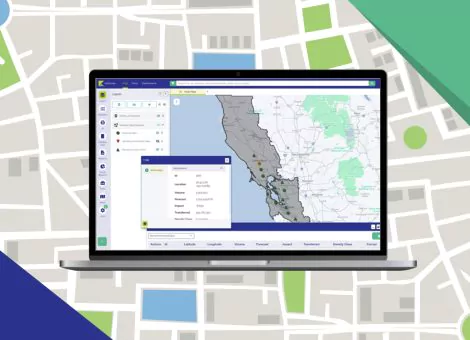Spotlight on cannibalization: what to do if you suspect you've oversaturated
Cannibalization is a critical concern for fuel and convenience retailers as they seek to expand their networks or enhance individual sites. It should be a key consideration within any network optimization strategy. No site is an island. And no two fuel retailers should have the same strategy: a location that works for one retailer may be a bad choice for another, due to its cannibalization potential.
Once a retailer reaches critical mass, any new sites added to their network will increase volume share at a greater rate than outlet share. Once a brand moves beyond saturation, it risks cannibalizing other sites in its own network.
But how can retailers tell whether new sites have the potential to cannibalize existing locations, before they commit to buy or build?
The first thing to understand is when cannibalization might occur. When multiple locations are drawing on the same demand, cannibalization risk should always be assessed in a network optimization strategy. Retailers need to understand how much the trade area can bear, or where the saturation point is.
When looking to establish or acquire a site in an area where you already have a presence, you need to ensure there is enough demand available in the first place. There are a number of characteristics that can cause cannibalization. In particular, be mindful of these three factors when planning new sites.
Site proximity: The most common and most obvious reason for cannibalization is building or buying a new site close to an existing site. Proximity doesn’t automatically mean cannibalization, but it’s important to consider how two nearby sites will interact with each other. For example, building a new site on the opposite side of a freeway to an existing site shouldn’t impact the established site. Building a new site in a suburban neighbourhood where you already have an offer may risk cannibalizing your fuel volume and convenience offering.
Your own actions: even just making changes within existing sites in your network can put you at risk of cannibalizing other sites. Adding or improving facilities at one site should always be considered in the context of the wider trade area. By tracking site loyalty, you can understand the impact of upgrading facilities at individual sites, and ensure the increased volume at the new and improved site doesn’t create a considerable loss somewhere else. In fact, a significant loyalty program, can actually impact volume transfer — so it’s important it’s considered in this regard too.
As you enhance and improve individual site offerings, customer data is invaluable in understanding consumption habits. Where they live, work, go to school, run errands — all these factors should inform your site strategy and convenience offer. You can distinguish nearby sites from one another, and help to avoid cannibalization, by closely aligning the individual offer of each with their unique hyper-local customer habits.
Competitor actions: always keep an eye on competitor activity too. New builds, closures, and expansions will all impact your sites. Getting the right market intelligence is critical to understanding whether any issues are generated by external forces or internal influences.
Spotting the signs of oversaturation
In identifying and overcoming the risk of cannibalization, the most effective action you can take is to run what-if scenarios, so you can understand the consequences of your actions before implementing them.
Run these scenarios simulating changing site attributes such as parking spaces or merchandise offerings, to see what your overall volume gain will be at your new site, and how it detracts from existing locations. Manipulating the data in this way requires predictive modeling capabilities to get a really clear view of your new network potential.
Network optimization, fueled by data
Kalibrate’s expertise and unique offering lies in our ability to combine data science with deep network optimization experience. To understand how best to optimize customer networks, and avoid cannibalization, we first establish any trends in market and client data. This allows us to confirm any potential increase in volume cannibalization with a client’s changing market presence over time.
Final thoughts
If you’re considering expanding into a market, it’s essential to evaluate your existing outlets while identifying new sites, to ensure you act in the best interests of the entire retail network. Gathering and considering data in this way will give you the most effective insights to inform individual site strategies, and gauge the impact on a network as a whole.
To find out how Kalibrate could help you improve your site and network strategies, take a look at the Kalibrate Planning platform.
Read more articles about:
Location intelligenceSubscribe and get the latest updates
You may unsubscribe from our mailing list at any time. To understand how and why we process your data, please see our Privacy & Cookies Policy
Related posts
Location intelligence
Market Optimizer: Demo video
Market Optimizer allows users to strategically grow their network in existing markets while balancing revenue...

Fuel pricing
The Kalibrate news round-up: June 2025
In this monthly feature, we look across the industry and mainstream news to uncover stories of note that we think are...

